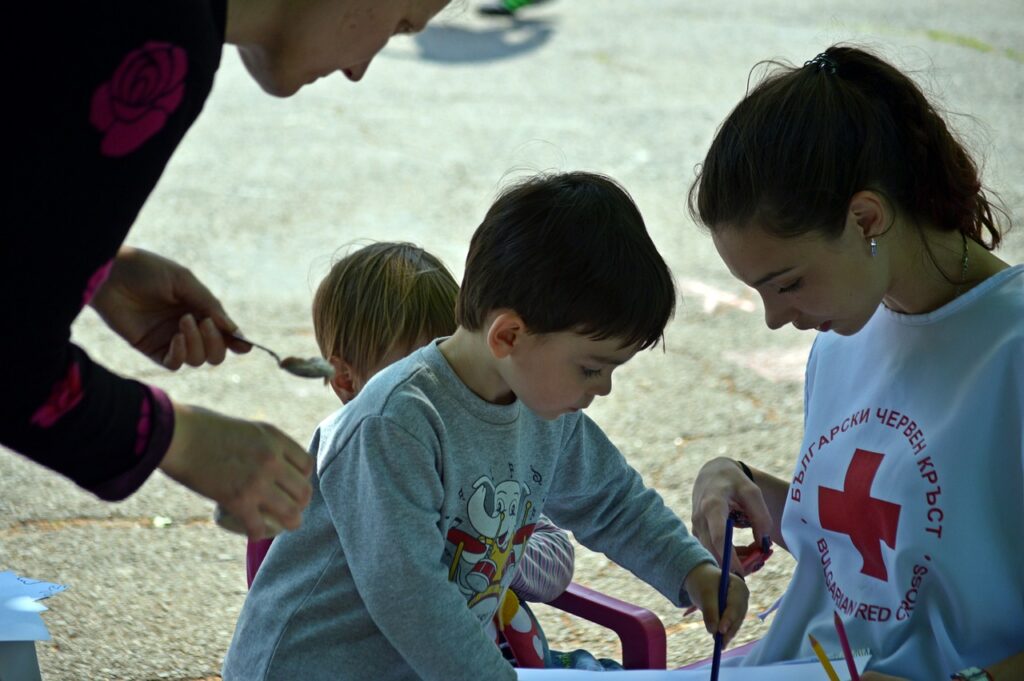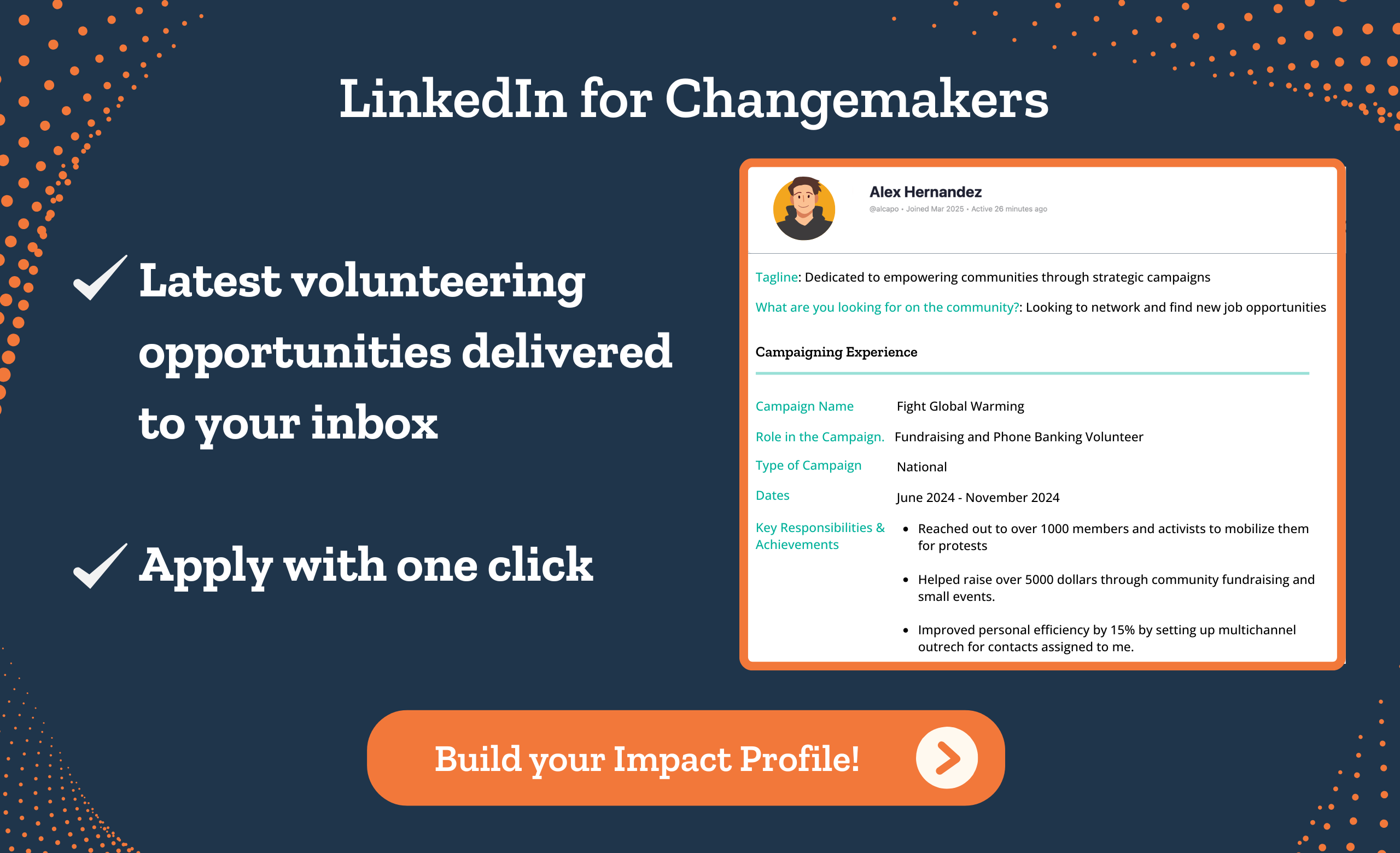Table of Contents
Nonprofit trends can vary based on communities’ evolving needs, advancements in technology, and changes in donor behavior, but there are some broad directions we can infer.
For example, people now feel the best nonprofits to work for allow them to volunteer remotely – something unthinkable just a few years ago. Other significant changes in the nonprofit industry include leveraging digital platforms, online fundraising campaigns, virtual events, and social media outreach.
Nonprofit trends have also shifted towards data analytics and technology tools to inform their strategies and decision-making processes. This includes utilizing donor data for personalized outreach, measuring program impact, and optimizing fundraising efforts.
Here’s a breakdown of everything you need about nonprofits’ future and fundraising.

Fundraising-related nonprofit trends in 2025
Diversify fundraising sources
Most nonprofits face fundraising challenges if revenues depend on only one or two sources of income. The wisdom from the market says you must find at least four or five separate sources of income and distribute the budget among them.
This diversification includes:
- Digital revenue streams like advertising from podcasts and video streams.
- Regular online and offline events where donations are raised.
- Ensuring the process of finding new ‘large gift’ donors keeps prospects constantly in the pipeline.
- Direct pitches to corporations as part of their social responsibility.
Resource donations other than money
To keep your nonprofit going, you must pivot to different forms of donations – away from straight cash and less dependency on many volunteers who show up physically. Instead, nonprofit trends indicate a shift to non-monetary donations and digital volunteers.
Here are some examples:
- Instead of raising funds to build a website or a mobile app, nonprofits can approach initiatives like ‘Develop for Good’, which was started after the COVID lockdown and assigns technology students to code tech solutions for nonprofits at a meager cost.
- Computers for Community, a nonprofit from North Carolina, US, has been collecting computers, fixing them, and donating them directly to communities that need them. Other volunteers help them repair the computers.
- Teen volunteers in Oregon staffed a crisis support line to help peers facing mental health challenges after the number of yearly calls spiked to 25,000 after 2020. The teens provided most of this support from home.
- Started in 2019, the Coalition for Literacy Equity is a network of all those involved in books – from publishers to mobile libraries. The goal is to change policy, but on the ground, they ensure books are collected and given to those who need them.
So keep your options open and be more imaginative about what you need and how to obtain the resources you need rather than focusing on just cash.
Remember – you can use an app to allow interested volunteers to sign up and conduct a survey or make calls from anywhere in the world. CallHub’s mobile app will enable you to do just that. You can have a look at its features here.
E-commerce stores nonprofit trends
As so many Twitch and Instagram influencers are proving, people like to show support by buying merchandise. If you haven’t already, create some merchandise for your non-profit. It will never be a mainstay of your fundraising efforts, but it is a good source of steady income for administration costs.
However, under the Internal Revenue Code Section 513 (a), profits generated from “unrelated business taxable income” are taxed. If you sell merchandise all year round and it is not specific to the cause you advocate, you may have to account for those profits separately and pay tax for them.
Read Next: Use These 52 Proven Fundraising Ideas to Raise More Funds This Year
Technology-related nonprofit trends in 2025
Digital payments for donations among nonprofits
‘The value of digital wallet transactions will exceed $12 trillion in 2026, from $7.5 trillion in 2022.’ as per this report. This is a rise of 60%.
Nonprofits must integrate wallets like Venmo or Google/Apple Pay across all donation drives, platforms, and donation moments.
In tandem with a mobile-friendly website, ‘quick pay’ integrations must be present wherever a call to donate occurs. You can also use QR codes as images on social media posts to collect donations.
Anything that increases the effort required to donate is likely to reduce your donations. The best solution is seamless integration of digital wallets, which come with their own APIs, and you must implement them.
Texts, SMS & peer-to-peer nonprofit trends
According to a survey conducted by OpenMarket, 75% of millennials and Gen-Z prefer texts over all other forms of communication. Broadly, they feel it is ‘less disruptive’ and a ‘convenient and effective’ way to be reminded of things.
So a growing percentage of donors prefer texts. And does that raise money? Emails and mass texts raised $3.3 billion in political funds for candidates through online fundraising platforms in 2022. The numbers speak for themselves.
‘Text to donate’ and other similar texting solutions for raising funds are the rising trends, and more nonprofits are getting on. 62% of nonprofits told MR Benchmarks that they primarily use peer-to-peer texts for fundraising. This use case is followed by advocacy actions (47%), event attendance (45%), and GOTV (39%), among others.
You also have to be imaginative in implementation. Don’t just ask for funds. Use automation and texts to send personalized reminders and alerts.
With a 99% open rate, this is one tech you must invest in as a nonprofit.
Artificial Intelligence usage: nonprofit trends
‘Skynet’ jokes aside, a great wonder of the emerging tech of Artificial Intelligence (AI) is its ability to process enormous amounts of data and discover trends that would take a volunteer weeks, if not years, to process. You could cut your volunteer requirements by a significant number if such routine tasks were handled by AI-powered software.
Imagine if a donor could search in your app or website, “I want to help abandoned puppies. How?” and the answer – along with all the details, was displayed in seconds. Or could all your donors be analyzed to determine exactly who is donating to you, when, and where?
These are just the tip of the iceberg regarding what AI can do, and nonprofits are beginning to integrate them, especially in customer support and FAQs. For example, Microsoft has recently released a slate of AI tools specially for nonprofits, including fundraising and donor reachout.
AI also reduces the number of staff a non-profit needs to keep in touch with all donors, which is a crucial bonus.
Personalization of donor communication among nonprofits
In 2025, fundraising should feel less transactional and more personal. Donors who engage with your cause on a deeper level are more likely to become loyal supporters.
Use tech to create personalized donor journeys with references to past donations, updates on causes, etc. Track and communicate your donors’ specific contributions and impact.
Of course, tracking hundreds of donors may not be possible, but to do so, you have to combine multiple technologies, such as AI, Workflows, smart Peer-to-Peer texting, Autoresponders, etc.
The idea is that technology makes personalization easier, so you must up your tech game on all fronts.

Nonprofit trends for donors in 2025
Donor-advised funds
Donor-advised funds (DAF) are gaining a lot of traction. They work by allowing donors to make a non-reversible donation (in cash, stock options, bonds, etc.) and immediately receive a tax benefit on the amount. They can then pick and choose how that money is distributed over a period of time. During that time, they may also use various means and fund managers to grow that fund through the market.
What is the growth? According to this report, ‘grants from DAFs to qualified charities were valued at $35.12 billion in 2023
With over a million DAFs operating in the US, it will be worth your time to assign resources to make personalized pitches to those that apply to your specific area of interest. Ideally, it would be best to focus on DAF, operated by fund managers, who collect donations from many donors. Since this puts your request beyond the whims of individual donors, grants will be for specific metrics, which you can appeal to.
Content creation for the next generation of donors – nonprofit trends
Generational differences can play a significant role in donors’ preferences. You are most likely to get donations from GenX (those born between 1970 and 1980), who are currently the most financially stable, and your strategy is most likely aimed at them. However, nonprofits should adopt strategies to cater to different generational preferences and create personalized experiences.
It is time to start tweaking your ideas for Millennials and Gen Z. The big difference is your approach. While earlier, most donors were happy to donate money and receive updates perhaps once a year, donors in these age ranges prefer a more hands-on approach with more frequent updates.
This means you may have to focus on a more specialized and larger content creation team than you are used to. GenZ has started donating in more significant numbers now, and expect to be told and shown what their efforts are going towards. According to the numbers, some 43% of GenZ surveyed by Classy.org stated they donated to GoFundMe or a similar platform in 2022.
Subscription models are the latest nonprofit trends
Traditionally, nonprofits collect large lump sums, perhaps during holidays or special events or at the year-end. However, as the rise of OTT platforms and pay-for-use apps indicates, many people now prefer to pay a small monthly amount over one lump sum. For example, create this option for your collection drives and encourage people to subscribe to your goals for micro-donations as little as $5 a month. These sorts of subscribers are the new ‘standard’ donors.
Of course, like all subscribers, you must cultivate your monthly donors with specific messaging (welcome emails, monthly newsletters, reminders, etc.) and exclusive content for them – including their names displayed on websites, donations made in their name, etc.

Staff and volunteers nonprofit trends 2025
Continue flexible timings and workplace.
Today’s volunteers want flexibility. To stay competitive, volunteer programs must include remote, virtual, and hybrid volunteer opportunities and events. This form of community action has been gaining traction, primarily due to its ability to gather resources worldwide.
This form of ‘micro-volunteering’ is often unscheduled and one-off, so it is critical to provide volunteers with software to work towards your nonprofit goals at a time and place of their choosing.
Consider tools like CallHub’s smartphone app, which allows you to run training, host virtual offices, assign work to volunteers (calls or peer-to-peer texts), and provide them with more information, scripts, and alerts.
Volunteer & impact tracking
With social media’s growing might, whether we like it or not, the ability to track and highlight the work one does with a nonprofit is now a major area of concern.
Even for work applications and certifications, volunteers now demand an accurate assessment of their work and the time they spend doing so.
Pen and paper can only take you so far. The time has come to track your impact digitally. It would be best if you had tools that can –
- Keep track of the hours a volunteer worked through a digital sign-in.
- Measure the dollar value and impact of multiple teams of volunteers toward the larger goal.
- Allow the organization or the volunteer to share their impact or volunteer hours on social media, with linkbacks to your website in case someone else wants to sign up.
- Allow volunteer work to be measured across multiple teams or even years so they have a ‘volunteer profile’ of their work.
There are several volunteer tracking tools in the market, so get one that fits your needs and budget. Here is an example of such a tool – Getconnected
Diversity and inclusion in volunteering
There is an increasing emphasis on diversity and inclusion in volunteer programs. Nonprofits are working to ensure that volunteer opportunities are accessible and welcoming to individuals from diverse backgrounds – especially from the community they are working with.
This includes addressing barriers to volunteering and creating inclusive environments that embrace different perspectives and experiences—Barriers like language, accessibility, on-ground information, and cultural nuances.
Ensure volunteers of all kinds can join. If they cannot, find out why and address it.
It’s important to note that technology should be implemented strategically, considering each nonprofit’s needs and resources. When selecting and integrating technology solutions, organizations should assess their goals, capacity, and budget. But this integration will be the difference between sinking and swimming.
However, the main crux of all trends and longevity is fundraising. You can meet your goals if you have a plan, a budget, and the ability to raise those funds. If you want a handy guide on fundraising to ensure that your means meet the demands of the coming years, then here’s a comprehensive template by CallHub, which will show you where you stand.

